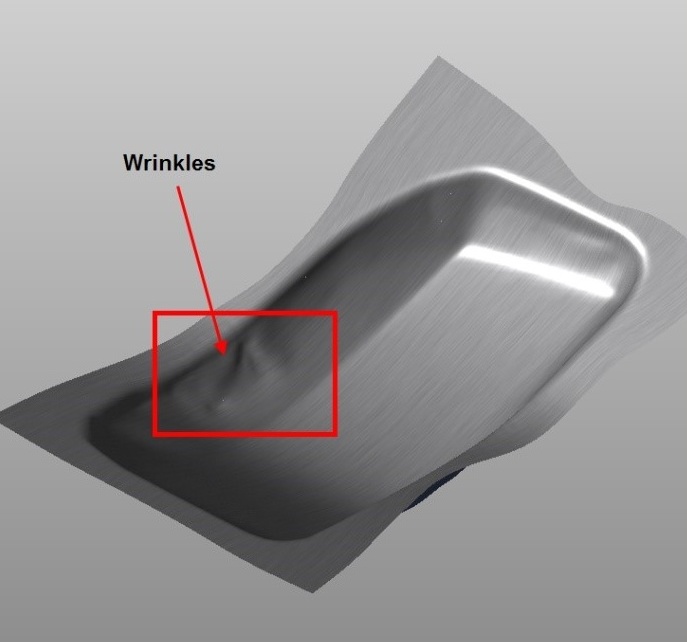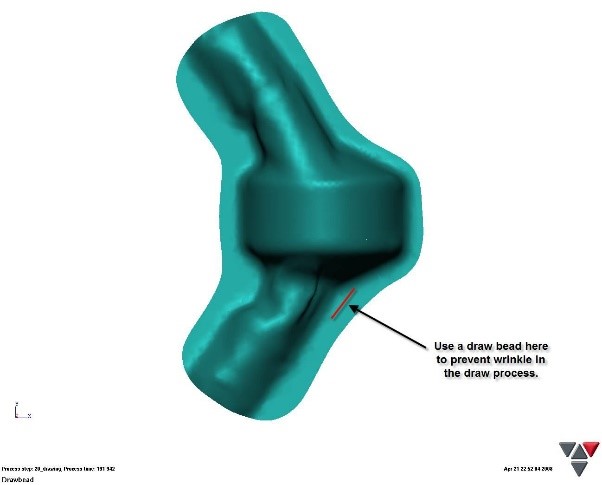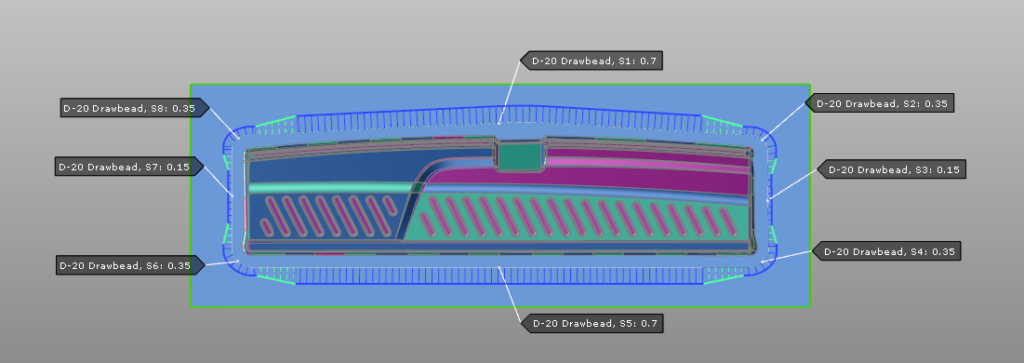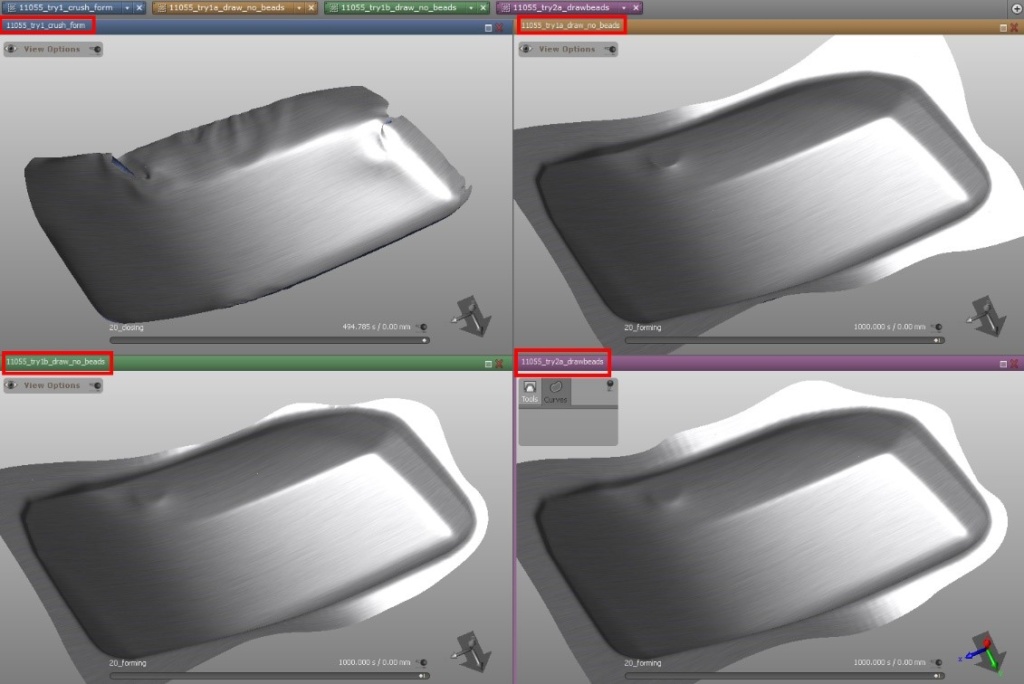What are Drawbeads in Metal Forming?
Contents
Drawbeads help in achieving an optimal forming process. It controls the material flow and minimizes cracks and wrinkles in metal forming. They utilize binders or pressure pads to achieve the desired outcome.
When forming metal sheets, wrinkles can occur due to compressive strains that gather the material together during the process. To solve this, drawbeads restrict the flow of material and stop the material from gathering further.

Wrinkles occur without drawbeads
How Do Drawbeads Work in Metal Forming?
The drawbeads occupy the space of a binder or pressure pad before the metal forming process takes place. The binder’s pressure affects the flow, shape, and depth of the material directly when it is closed.

These are placed locally OR all around depending on the wrinkling problem
In extreme cases, the drawbead design restricts material flow and metal stretching results from this. It also occurs when the material properties and product shape allow the sheet metal to be stretched without splitting. If the depth of the material does not allow sufficient stretching before failure, this type of drawbead may not be suitable.
They can also be designed in such a way that there is a balance between material flow and 100% lock. Complex and deep shapes form while the material sufficiently reduces or prevents wrinkles altogether.

Variable drawbead design, to control the flow of material at localized points
What’s the impact of drawbeads on metal forming simulations?
The size, shape, and depth of drawbeads may vary around the perimeter of a draw tool when there is localized control of the metal flow at a given point. This method easily draws complex shapes. It also aids in adjusting complicated designs to achieve the desired results. During physical testing, drawbeads adjust to suit the height requirements. Some drawbead designs don’t work perfectly on the first try just like any other contraption. Given this, it is wise to plan for these scenarios by making it adjustable during the trial stage.
Material grade, type, and thickness also interact with drawbeads to produce the desired outcome. Two varying materials of the same thickness placed in a draw tool will yield two very different results. With that said, identifying the material properties is critical when designing and trying a draw tool.
The complex nature of drawbeads make it difficult to achieve the desired outcome on the first try. An initial simulation aids in designing and testing proposed designs. To avoid failure, these drawbead designs and layouts can be tested in the virtual world first until the desired result is achieved via simulation.

drawbead designs and trials give multiple simulations
A drawbead succeeds in real-world tooling mechanisms and yields a reduced physical tryout time when it has been properly designed and optimized in multiple simulations. If you have any questions about drawbeads and how metal forming works contact us now.
